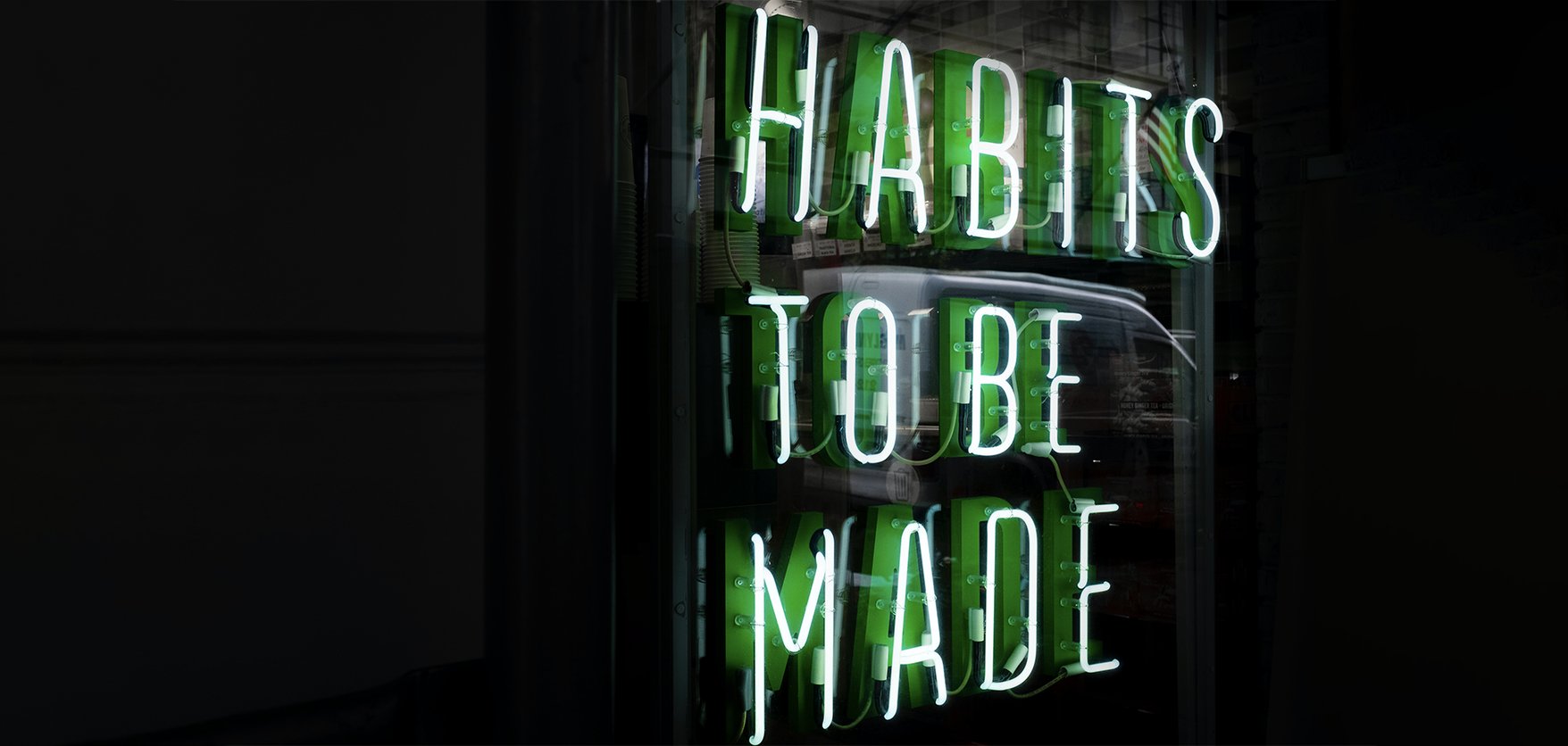
It costs your business 5-7 times more* to sign a new customer, than to retain an existing one. Meanwhile, research shows that you'll have a 60-70% success rate selling to a repeat customer, vs 5-20% for brand newbies. Nurturing your existing network is central to sustainable business growth, but innovating ahead of competition needs to go a step further - taking a data-driven approach to uncover and respond to behavioural and attitudinal loyalty.
Behavioural loyalty is complex; with customers' habitual behaviours not always being positive ones. In this article, we’ll explore the consequences of our product designs, the positive and negative behaviours that surround loyalty, and how we can avoid building negative habits into our products.
*Forbes' Customer Retention Versus Customer Acquisition study 2022
How can you tap into the habits of highly loyal customers to drive innovation?
According to Peter Drucker, widely recognised as the father of management thinking, ‘The true purpose of a business is to create and keep customers’.
Let’s imagine you've successfully created a loyal customer base, habitually using your product or service. Based on the definition above, you are most of the way to success. However - what does loyalty mean in terms of the habits of your users, and crucially, what are the consequences?
First - let’s try to answer two questions:
1. How habit-forming is your product?
2. How do you discover the habits of your most loyal customers?
How 'habit-forming' is your product?
You can start to understand the habit-forming nature of your product using a framework like the Hook Model, created by Nir Eyal. According to this model, as a user interacts with a product, they pass through four phases: Trigger, Action, Reward, Investment.
When planning or analysing your product, ask the following questions:
1. Does it have an internal or external trigger which causes the user to start using the product? An external example could be a marketing email, internal could be as simple as hunger triggering the use of a food app.
2. Is there a clear action for the user to take after they receive the trigger?
3. Are they given a reward (particularly a variable reward) for completing the action?
4. Does the action/reward cycle lead to them making a greater investment in the product, which in turn makes the apparent value of the product greater?
In this cycle, the investment phase is the most surprising: evidence shows that the greater a user invests or labours to use a product or service, the higher they perceive the value, not lower.
Research conducted by Ariely, Norton and Mochon (2011) demonstrated what they called the “IKEA effect”:
- In a series of studies in which consumers assembled IKEA boxes, folded origami, and built sets of Legos, they demonstrated that participants who successfully completed a self-made product saw their creations as similar in value to the creations of experts, and expected others to share their opinions.
- As an example from the origami experiment, builders bid more for their creations than did non-builders asked to bid on those creations, valuing them nearly as much as the market valued the creations of origami experts.
To ask the right questions and plan out the UX of your product to improve the habit forming nature of your interface, you can use a structured template.
How do you discover the habits of your most loyal customers?
In the previous article, we talked about the sort of metrics you should be measuring and collecting in order to understand the loyalty of your customers.
As you perform this analysis, ask the following questions:
- What does it mean to be a devoted user?
- How often should someone use your product?
- What is the series of actions taken by your most loyal customers?
- What user journey did they take which formed their habit?
- Compare a cohort of infrequent or low loyalty customers with a cohort of high loyalty customers.
What are their main behavioural differences? Can you discern a pattern?
The behavioural consequences of habit-forming products
Positive habits
When a customer establishes a positive habit surrounding your product or service, this can lead to great benefits for you and them.
Examples of positive habits:
- Users of an online grocery app remember to login regularly to do their weekly shop.
- A fitness app user trying to achieve their fitness goal remembers to count their steps and macros or do their at-home yoga class.
- The coffee shop customer goes back daily to get their favourite drink
The positive consequence for each business involved in the above examples is clear:
- The supermarket gets regular weekly customers, they can predict stock, buy in bulk, optimise costs, whilst the regular interaction means they can give offers and discounts.
- The fitness app gets a regular subscription payment, and with more info on the user can offer better insight and recommendations.
- The coffee shop covers their overheads and can afford to stay open, have more staff or longer hours, or buy that new machine.
- In most cases above the user also receives a positive benefit - they remember to do a positive thing which they enjoy or that materially improves their life.
Negative habits
Some illustrative negative habits from highly loyal customers of a product or service might be:
- A payday loan provider makes so it incredibly easy to take out a payday loan with 16 million% interest that they get stuck in a habitual cycle of taking payday loans every month, just to pay off the previous month’s loan. These “repeat” customers are forced to be loyal.
- A social media app becomes so addictive for its members to use, that it begins to affect their self-esteem and mental health. Such that, in this report, 60% of people using social media reported that it has impacted their self-esteem in a negative way.
- A bank creates such incredible sales incentives to its employees in order to cross-sell products to its most loyal customers, that the bank’s employees allegedly opened more than 2 million bank and credit card accounts without customers’ permission.
These are extreme examples of the consequences of negative habits for some loyal customers, due to the way the products they used were designed or incentivised.
What are the signs you're inadvertently driving negative habits for loyal customers?
First, identify if you're optimising or incentivising the wrong metrics via metric surrogation:
Metric Surrogation is defined as a behavioural tendency to confuse what's being measured with the metric being used.
As an example, at Wells Fargo, employees were given sales incentives to open 3.5 million deposit and credit card accounts without customers’ consent, in an effort to implement its now-infamous “cross-selling” strategy. Metric surrogation can cause us to drive “bad” customer behaviours or habits, because we have tied the performance of one metric to an overall outcome which is driven by many factors.
Meanwhile, The team running AB tests at Bing.com chose to measure the total number of search queries done on Bing. They assumed that if that number went up, they would have more users using their product more often. In actuality, because teams were measured on driving queries per user, they started to prefer features that made users do more searches to find the same result, and penalise changes that got users to the same answer in fewer hops.
This drove a change in the UI that created a harder to use product, worse habits and (potentially) less customer loyalty.
Then, do some self-analysis using a tool such at the Manipulation Matrix, proposed by Nir Eyal:
Ask if you are one of the following:
- The Facilitator: Building for ourselves and others, while materially improving the lives of end-users
- The Entertainer: Building for ourselves and others, but not necessarily making a material difference to our end-users
- The Peddler: Building for others but not for ourselves, we may materially improve their lives but we lack the insight of being an end-user of our product
- The Dealer: We neither build for others nor for the material improvement of others - we know it’s not helpful for them and we could never use it.
How do we ensure loyalty-driving experiences with positive consequences?
Avoid Metric surrogation
- Use multiple metrics, each measuring customer loyalty
- Create a composite metric from multiple metrics that measure customer loyalty
- For a balanced view, you could choose two behavioural and one attitudinal metric, and incentivise your product teams to improve the right combination of these in order to drive greater loyalty. Learn more about measuring loyalty.
Test with real users
- Qualitative Testing: user testing, research, diary studies - all done with small user groups.
If we are honest product creators, the process of interviewing and talking to real users should give us some insight into their motivations and perceptions, and ultimately customers will be open about how our products make them feel. - Quantitative: rollout new features and habit-forming user journeys in an experiment, A/B test, in beta or a controlled rollout. Measure the large scale impact while de-risking the potential downside for you and your brand.
In summary
We’ve now looked at the positive and negative habits of highly loyal customers, and what the consequences of those are. We can act in order to avoid optimising negative habits for our customers, by planning our experience carefully and ensuring we measure the right metrics.
By putting the experience in real users hands and measuring the impact of every change we make through experimentation, we can learn from all of our product decisions while improving customer loyalty.

.png?width=564&height=348&name=Screenshot%202025-06-10%20at%2015.03.23%20(4).png)

